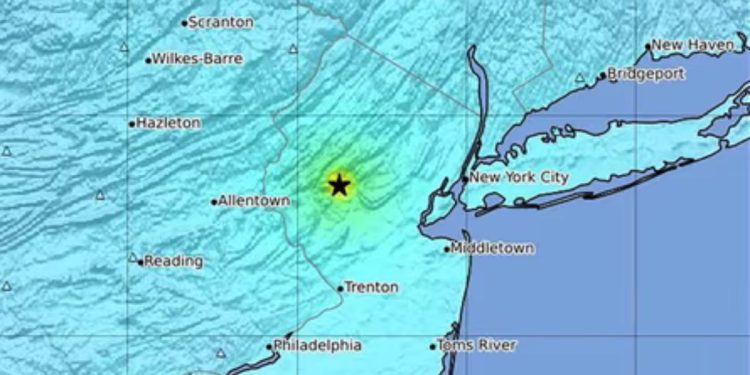Another earthquake has struck parts of New York State, further fueling concerns about the increasing seismic activity in the region. This recent development is both shocking and unsettling.
The early morning earthquake has caused concern among locals and authorities as several counties were affected. Efforts are underway to assess the extent of the damage caused by the earthquake.
Groundquake Specifics
This Article Includes [hide]
At approximately 6:45 a.m., a seismic event shook central New York, near the picturesque Finger Lakes region. According to the United States Geological Survey (USGS), the earthquake measured 3.8 on the Richter scale. While this level of intensity was sufficient to be perceptible to residents, it did not result in significant structural harm or widespread destruction.
Several areas in Syracuse, Rochester, and Buffalo experienced the vibrations of the earthquake, as confirmed by seismologists. The tremors were felt by many residents in their homes, lasting for what felt like an extended period. Witnesses described it as a powerful jolt, followed by a brief rumbling sensation. Although local authorities are closely monitoring the situation, there have been no reports of significant structural damage at this point in time.
Effects on Neighborhoods
The earthquake has left residents feeling uneasy, especially those in areas that have experienced previous seismic events. Fortunately, there have been no reports of major injuries or fatalities. As a safety measure, some buildings in Syracuse were temporarily evacuated. Local authorities are urging citizens to remain vigilant and prepared for the expected aftershocks that typically occur after earthquakes of this magnitude.
According to Laura Thompson, a resident of Syracuse, the building shook unexpectedly. The sudden tremor took everyone by surprise. While we are familiar with California’s seismic activity, I never thought it would happen in this area.
In Rochester, there were no reported injuries from the earthquake, but some walls and historic structures suffered slight damage. Local residents took to social media to share the aftermath, posting videos of shattered shelves. One eyewitness described the quake as “unsettling,” noting that it was unexpected for New York.
Being Ready for an Earthquake
New York State may not experience earthquakes as frequently as California does, but the recent increase in seismic activity has brought attention to the need for preparedness in the event of such a disaster. The state of New York is intersected by various fault lines, including the Ramapo Fault which runs along its western boundary.
According to Dr. Emily Hunter, a seismologist with the USGS, it is crucial for people to take precautionary measures, even though earthquakes are not frequent in the area. She emphasizes the importance of securing heavy objects on shelves and having an emergency kit prepared in case of aftershocks or other disturbances.
In addition, local authorities are considering implementing more stringent measures to reduce the risk of earthquakes in specific regions, especially in buildings that may not comply with current seismic codes.
Continued Monitoring and Aftershocks
The USGS has issued a warning about possible aftershocks that may occur in the hours or days following the main earthquake. While these aftershocks are typically less severe than the initial quake, they still have the potential to cause additional damage or create anxiety among residents. It is important to stay informed and take necessary precautions in the event of future earthquakes, as authorities are urging everyone in the affected areas to do so.
Emergency response teams are ready to assist if there are any additional reports of damage. New York State Governor Kathy Hochul has reassured the public by addressing the issue directly. In a press release, she stated, “We are closely monitoring the situation, and we are fully prepared to offer assistance to any community that may have been affected by this earthquake.”
Scenario Analysis: Northeastern Earthquakes
There is speculation about the possibility of more frequent seismic events in New York and the rest of the Northeast following a series of smaller tremors in the area over the past few months. Experts caution that these minor earthquakes could be a sign of changes in local fault dynamics or an increase in overall seismic activity.
The northeastern United States, though not as well-known for earthquakes as California, has experienced notable seismic events. In 1944, a powerful 5.8-magnitude earthquake struck New York State, causing extensive damage to homes and infrastructure. It is worth noting that despite the destruction, no lives were lost in this event.
The recent earthquake, although not causing significant damage, serves as a reminder of the importance of being prepared for seismic activity, regardless of its rarity in your area. Residents of New York State are urged to stay vigilant and take necessary precautions to safeguard their homes and belongings, while authorities closely monitor aftershocks and assess the overall impact of the event.
New York, like many other places, is not exempt from seismic activity, as illustrated by this recent incident. While earthquakes are not frequent occurrences in the state, being prepared can significantly mitigate the risks associated with these natural events.


